// xviii // native french speaker // social sciences // aspiring law student //
Don't wanna be here? Send us removal request.
Text
Conveying Worldbuilding Without Exposition!

(As requested by both an anon and @my-words-are-light)
One of the hardest parts of writing speculative fiction is presenting readers with a world that’s interesting and different from our own in a way that’s both immersive and understandable at the same time.
Thankfully, there are a few techniques that can help you present worldbuilding information to your readers in a natural way, as well as many tricks to tweaking the presentation until it’s just right.
Four basic techniques:
1. The ignorant character.
By introducing a character who doesn’t know about the aspects of the world building you’re trying to convey, you can let the ignorant character voice the questions the reader naturally wants to ask. Traditionally, this is seen when the protagonist or (another character) is brought into a new world, society, organization. In cases where that’s the natural outcome of the plot, and the character has a purpose in the story outside of simply asking questions, it can be pulled off just fine. But there’s another aspect to this which writers don’t often consider:
Every character is your ignorant character.
In a realistic world, no person knows everything. Someone will be behind on the news. Someone won’t know all the facts. Many, many someones won’t have studied a common part of their society simply because they aren’t large part of that fraction or don’t have the time for it.
Instead of inserting an ignorant character and creating a stiff and annoying piece of expository dialogue, find the character already existing in the story who doesn’t know about the thing being learned.
2. Conflicting opinions.
A fantastic way to convey detailed world building concepts is to have characters with conflicting viewpoints discuss or argue about them. Unless you’re working with a brainwashed society, every character should hold their own set of religious, political, and social beliefs.
Examples of this kind of dialogue:
Keep reading
19K notes
·
View notes
Photo

7K notes
·
View notes
Photo


It’s only still the ~beginning~ of the semester for me but it already feels like I’ve got way too much going on in very little time. I find that the way I work best to organize myself is to visualize how much time I have for everything, so I made this printable to help me out.
The tracker considers not only the due date, but also how much time you think you’ll need to complete the task, its priority and its progress. The little calendar is very useful if you want to give each task a color or code and see how long your preparation spans, plus you can visualize your due dates more easily.
Each color comes in the two versions, aka one with little symbols for due date and time, and another with just the words. Hope it’ll help out with your organization needs!
Access drive folder here
#printable#printables#free printables#studyblr#studyspo#to do list#assignment tracker#tracker printable#study printable#academia#study#organized#productivity#productive#exam preparation#student#my printables#op
178 notes
·
View notes
Photo

Fun is something we all need more of when the going gets hard, especially when the notes are long and the subject is hard! Here’s a few tips to help you become more interested in your work & keep on going.
Interactive Study Tools!
Written Kitten: get a kitten/puppy/bunny pic every 100 words
Quizlet: play fun games with your flashcards
Memrise: add custom mnemonics to your vocab terms
Clozemaster: pretend your language learning is a video game
GoConqr: go and make those online mindmaps
Khan Academy: make your learning totally interactive
Online Resources: a masterpost from youtube to history!
Snacks!
101 Study Snacks: (mostly) healthy, fun & easy snacks
Study Foods: a fun & healthy guide to what you should eat
Feed Yo’ Brain: sweet, savoury, or a drink? all covered!
5 Recipes That Make Life Easier: simple & necessary
5 Cheap, Tasty, & Healthy Snacks
Buzzfeed Tasty: simple & delicious video recipes
Playlists!
Study Playlists Masterpost: everything you ever need
Study Playlist Masterpost: aaaand some more! in categories!
Soundtracks for Study: to help you get through that study sesh
& shoutouts to my favourite playlists:
calm down & work
rose redux
mildliners playlists
study nonstop
Study Sounds: not quite playlists, but calm and great for studying
Coffitivity: pretend you’re studying in a coffee shop
Noisli: study in nature rather than your room
Organization!
How to Stay Organized: oodles of helpful tips!
Organization: advice both physical and digital
Organization Methods: a bunch of different strategies
The Organization Guide for Lazy Students
Staying Organized in College: a seven step guide
How to Keep Binders Organized For School
Study Breaks!
Study Break Ideas: bet you hadn’t thought of doing yoga
Energizing Study Break Ideas & What To Avoid
Online Pomodoro Timer: work, break, repeat: all timed
Study Breaks: ideas for those 5 minutes of downtime
Studying 101: The Pomodoro Technique
Non-Studying Things To Do During Your Free Period
Doodles!
How To Illustrate Your Notes: perfect for visual learners
Guide to Pretty Notes: spice up your dull note-taking habits
Fundamentals of Visual Notetaking
Doodle Ideas: an adorable guide from studypetals!
Tumblr’s Bullet Journal Explore Page: for ultimate doodliness
There you have it! Try mixing up all these different strategies for maximum fun while studying.
If you have a way of making studying fun that wasn’t included, please please reply & let everyone know!!
8K notes
·
View notes
Text
How to Handle Having TOO MUCH To Do
So let’s say you’re in the same boat I am (this is a running theme, have you noticed?) and you’ve just got, like, SO MUCH STUFF that HAS to get done YESTERDAY or you will DIE (or fail/get fired/mope). Everything needs to be done yesterday, you’re sick, and for whatever reason you are focusing on the least important stuff first. What to do!
Take a deep breath, because this is a boot camp in prioritization.
Make a 3 by 4 grid. Make it pretty big. The line above your top row goes like this: Due YESTERDAY - due TOMORROW - due LATER. Along the side, write: Takes 5 min - Takes 30 min - Takes hours - Takes DAYS.
Divide ALL your tasks into one of these squares, based on how much work you still have to do. A thank you note for a present you received two weeks ago? That takes 5 minutes and was due YESTERDAY. Put it in that square. A five page paper that’s due tomorrow? That takes an hour/hours, place it appropriately. Tomorrow’s speech you just need to rehearse? Half an hour, due TOMORROW. Do the same for ALL of your tasks
Your priority goes like this:
5 minutes due YESTERDAY
5 minutes due TOMORROW
Half-hour due YESTERDAY
Half-hour due TOMORROW
Hours due YESTERDAY
Hours due TOMORROW
5 minutes due LATER
Half-hour due LATER
Hours due LATER
DAYS due YESTERDAY
DAYS due TOMORROW
DAYS due LATER
At this point you just go down the list in each section. If something feels especially urgent, for whatever reason - a certain professor is hounding you, you’re especially worried about that speech, whatever - you can bump that up to the top of the entire list. However, going through the list like this is what I find most efficient.
Some people do like to save the 5 minute tasks for kind of a break between longer-running tasks. If that’s what you want to try, go for it! You’re the one studying here.
So that’s how to prioritize. Now, how to actually do shit? That’s where the 20/10 method comes in. It’s simple: do stuff like a stuff-doing FIEND for 20 minutes, then take a ten minute break and do whatever you want. Repeat ad infinitum. It’s how I’ve gotten through my to do list, concussed and everything.
You’ve got this. Get a drink and start - we can do our stuff together!
100K notes
·
View notes
Photo

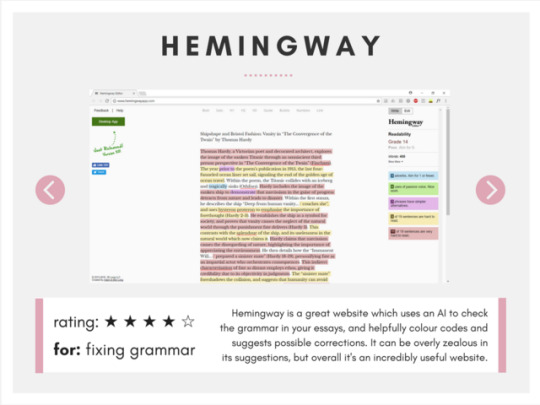

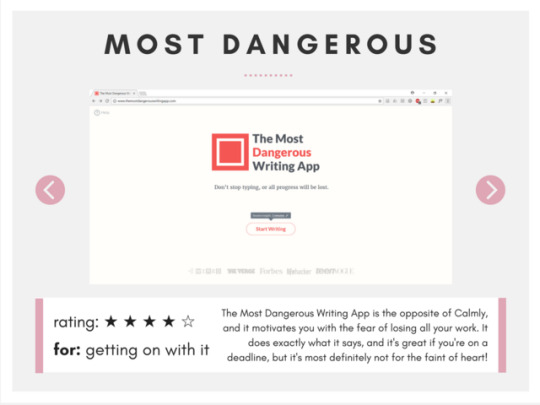
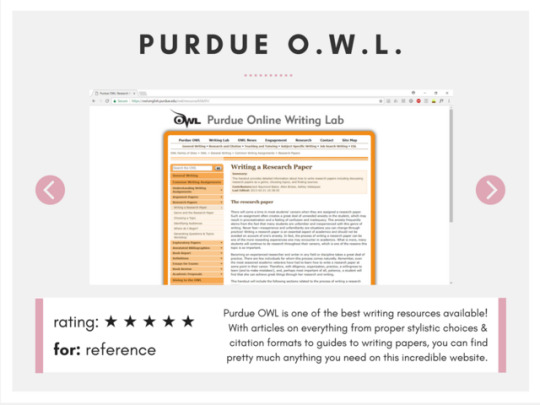

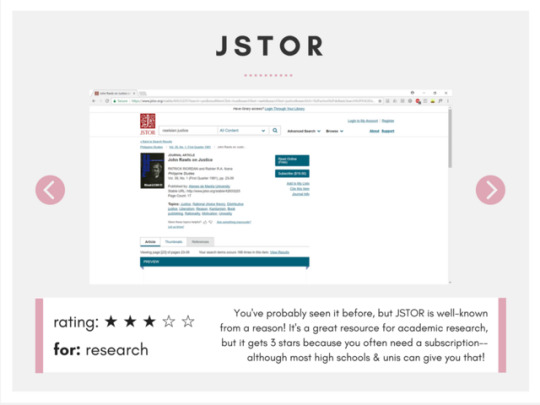

Here’s some weapons for your essay writing arsenal!
Hemingway Editor Calmly Writer The Most Dangerous Writing App Purdue O.W.L. One Look Thesaurus JSTOR Google Scholar
Reply with your favourite or other great websites I didn’t include!
#useful#i've used many of these and would recommend!#jstor is a life saver for social science#purdue is the format bible#google scholar was really helpful in high school!
71K notes
·
View notes
Photo

wow i can’t believe it but i hit 3k yesterday and i’m so grateful to everyone who decided to follow me whether it was 8 months ago when i made this blog or just today!! to celebrate this milestone, i’m going to be doing blogrates just to give back to you all!!! :-) please don’t let this flop can i get like at least 10 lmao
RULES
must be following me
reblog this post
must be mostly studyblr/aesthetic blog/similar (if you’re unsure just ask, i’ll probably give you the benefit of the doubt!)
send me an ask with (br) at the beginning and give me a song rec as i’m looking for more music!
if your studyblr is a side blog then let me know your url
include your original content tag if you want me to judge that!
this closes on august 21st (open for 2 weeks)
BLOGRATE FORMAT
url: 1 / 2 / 3 / 4 / 5 / 6 / 7 / 8 / 9 / 10 / + icon: 1 / 2 / 3 / 4 / 5 / 6 / 7 / 8 / 9 / 10 / + theme: 1 / 2 / 3 / 4 / 5 / 6 / 7 / 8 / 9 / 10 / + posts: 1 / 2 / 3 / 4 / 5 / 6 / 7 / 8 / 9 / 10 / + original content: 1 / 2 / 3 / 4 / 5 / 6 / 7 / 8 / 9 / 10 / + overall: 1 / 2 / 3 / 4 / 5 / 6 / 7 / 8 / 9 / 10 / +
i personally won’t specify if i’m following but you’ll know if i am, and i’m definitely looking for some new blogs to follow so i just might! i know i have this open for 2 weeks but i’m still doing my trials (really hectic exams) for another week so there may be a little delay but i promise i’ll get them all done! thank you so so so much once again!!!! :-)
127 notes
·
View notes
Text
i feel like some studyblr/appblrs give harsher motivational advice… things like “you won’t get anywhere unless you’re working hard all the time”. don’t get me wrong, it’s very important to be ambitious and motivated and working hard to achieve things in life, but that’s not all life has to it! you don’t need to be running yourself ragged 24/7 to get work done, that’s not healthy and will hinder your growth!! follow your dreams, and get there by putting in the effort, but enjoy the journey and remember why you dreamt them in the first place. make your efforts worth it and don’t be afraid to slow down in order to take care of yourself.
108 notes
·
View notes
Photo

Grade Tracker Pack 1.0!
I was already making these when an anon asked for them!
Comes in 5 versions: for the class itself, and for its classwork, homework, quizzes, and tests
Box to write what class the printable is for
Box to write notes in
Chart to the left to name the numbers and write out the grade %s
Chart to the right to dot-in grade percents and see how they change
Comes in landscape A4 and letter page size
Comes in PDF and JPEG file format
Rules & Information
Please do not steal, claim as your own, or redistribute; basic rules apply. Read more on my printable page
As a thank you to my followers, this printable doesn’t use AdFly :)
Download here!
My Printables Page & Tag | Requests are always open!
3K notes
·
View notes
Photo

Hi everybody! I’ve gotten a couple of requests for this post, so I thought I’d finally put together my process for making a weekly spread!
Disclaimer: This is simply a system I find to be simple and doable for everyday life. By no means is this the only way or the best way to bullet journal! It’s just a way that I find to be realistic and aesthetically pleasing.
Before we start: most of my layout is based on @studypunked’s and the moodboard I used was made for me by @sapphiccstudies!
Supplies I used: Hardcover black Moleskine (grid paper); Green Mildliner; Pilot Hi-Tec-C 05 gel pen; Pony Brown stickers; Clear tape
Step 1: Decide on a color scheme! I always choose a monthly theme (for example, January’s was outer space and March’s was plants). Then, for each week I choose a subtheme! (ex. the first week of January was moon phases.) Then, I choose a Mildliner color that matches the theme. This week, I used a pink moodboard with green accents, so I used a green mildliner!
Step 2: Weekly planning

I list the week number at the top of the page, and underneath that I put the dates within the week. (This has no purpose other than making me feel organized.) Then, below that I like to make a little monthly calendar (because it’s surprisingly often that I need to know what day of the week a certain date is!) Finally, below that I have a weekly schedule. This is where I write the dates of any tests, quizzes, projects, holidays, birthdays, etc! Generally, these are transferred from my monthly event calendar.
Step 3: Weekly tasks

This step makes my job pretty easy throughout the week! It’s as simple as listing the date and then making check boxes next to any tasks for the week. (This way, I don’t have to worry about much on days when I’m busy.)
Step 4: Finding images
Finally, the weekend rolls around and I’m ready to get into the fun stuff! Usually, here’s where I scour Google Images (I like to use the keywords ‘tumblr’ and ‘aesthetic’ along with my chosen color and theme) for pictures, but this week was easy for me thanks to a moodboard :)
Step 5: Drawings

After choosing my images (usually three, but it’s summer and I don’t have many tasks so I used six) I draw some stuff that goes with the theme in anywhere there will be empty space. Sometimes I also look for quotes and get a little prwctice with typography!
Step 6: Arrange and paste images

I play around with the layout of the images until I find the arrangement I like best, then use little loops of scotch tape to paste them down (usually straight but sometimes crooked if I’m feeling artsy)
Bonus Step: Add Stickers!

I only sometimes do this, but the gist of this is “put them wherever you want, but not too many because stickers are expensive.”
And Voilà! Here’s the finished product:

2K notes
·
View notes
Text
3 Study Methods You Should Use More Often
This was originally for an article writing assignment, but I thought “why not write something I can also post on my blog?” so here are three study methods that I haven’t seen a lot of in the studyblr community but are definitely worth mentioning.
The Leitner System
Flash cards have remained one of the most popular ways to study. Some people use them to memorize vocabulary, remember answers to specific questions, or even associate dates with events. Although the use of flash cards is convenient, their effectiveness has been reduced due to most people’s habits of prioritizing each card equally and therefore spending too much time memorizing the information on them.
The Leitner System, created by a German popularizer of science named Sebastian Leitner, is a more efficient method of studying that implements the concept of spaced repetition. All the cards start off in one pile. You would first scan through these cards, then test yourself. Each card you answer correctly goes to a second pile, while those you answer incorrectly should be revised then placed at the bottom of the pile. When you review the cards in the second pile and get them correct, they will be promoted to a third pile. An incorrect card will always get demoted to the first pile, even if they had previously been promoted to the last pile.
The reason why this method is so effective is that you end up reviewing the first pile of cards more frequently—the cards you don’t know very well. Some people choose to review their Stack 1 cards every day, Stack 2 cards every other day, Stack 3 cards once every three days, and so on.
Once all your cards have been promoted to the highest box, study them thoroughly and then start over. The continuous revision trains your speed so that you may reach fluency, which allows you to recall the information faster.
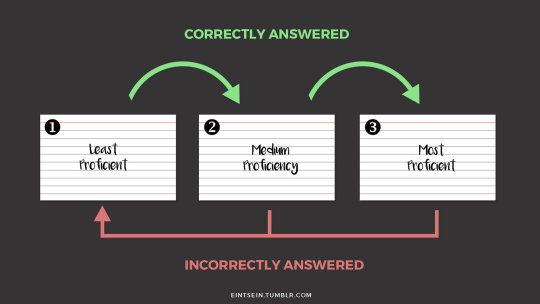
Timed Memorization
The name tells it all: you memorize a certain text within a time limit, normally around five to ten minutes depending on your fluency and memorization abilities. When the timer starts, you begin memorizing. When time is up, you flip to the next page, even if you haven’t finished the previous page yet. Continue until you’ve gone through all your material.
Timed memorization helps you to discipline yourself because your brain thinks that there’s no time for messing around; you have to do this here and now. Make sure to repeat the things you missed and revise everything frequently. This method is actually one of the most effective for cramming as it gives a better coverage than if you spend a whole half hour memorizing one subtopic.
The Memory Palace or Mind Palace
Sound familiar? In BBC’s Sherlock, the ‘highly functioning sociopath’ uses this method to remember vital information and facts. A mind palace is a systematic arrangement of information, each detail corresponding to a specific object in a familiar place. To ensure that you really remember everything, the objects have to appear shocking and conspicuous.
Here’s an example: if I wanted to memorize “crimson, 11, delight, petrichor (the smell after rain)”, aside from imagining Amy Pond or the Doctor saying it, I would first choose a place, let’s say my school. I’d imagine myself walking up to the front gate and seeing that the entire building has been painted the color of blood—crimson. The building would then rise as though it were lifted from the earth and crumble into rubble, controlled by Eleven, the character from Stranger Things. Now, since I can’t really picture delight specifically, I’d probably end up visualizing a colossal sign that simply reads “delight” posted in front of my school. As for petrichor, I’d imagine curves rising out of the puddles on the asphalt after a rainy night, a visual representation of the smell of the rain. Of course, these visualizations have been created to suit my memory. (I wouldn’t know if you watched Stranger Things.)
I used this method when memorizing case studies for geography, although I chose to visualize fictional places from television series and cartoons. Some people do opt to create artificial places, but these often become blurry and are easily forgotten.
As with any study method, repetition is vital to storing the information in your long-term memory. Visit your “palace” as often as you can. Soon enough, you’ll remember the data as well as you remember the place associated with the data.
So there you have it, three lesser known methods of studying that have proven to be immensely efficient. Now, there is no “correct” way to study, but there are methods that can ease your learning process.
22K notes
·
View notes
Photo

So, I’ve decided to make a Project Planner Printable! (Available in A4 and Letter-size!)
This is kind of just a helpful sheet to get all of your project’s most important information all in one place! It’s useful to refer to for quick questions and, with the different sections, it can help keep track of things that you may need to include in your process book (such as how many phases were in the project according to the schedule, what was due for those phases, and your briefs).
I’ve also put some color to it, but there is also a blank version available for you to decorate yourself!
Google Drive folder for the files
Please reblog if you use them and let me know what you think!
Mentioned or tag me if you take a photo with it written on or used in any studyspo pictures! I will gladly reblog if I see you using my printable, of course.
If you’d like any changes to the printable, send an ask!
Hope you find this useful!
2K notes
·
View notes
Photo
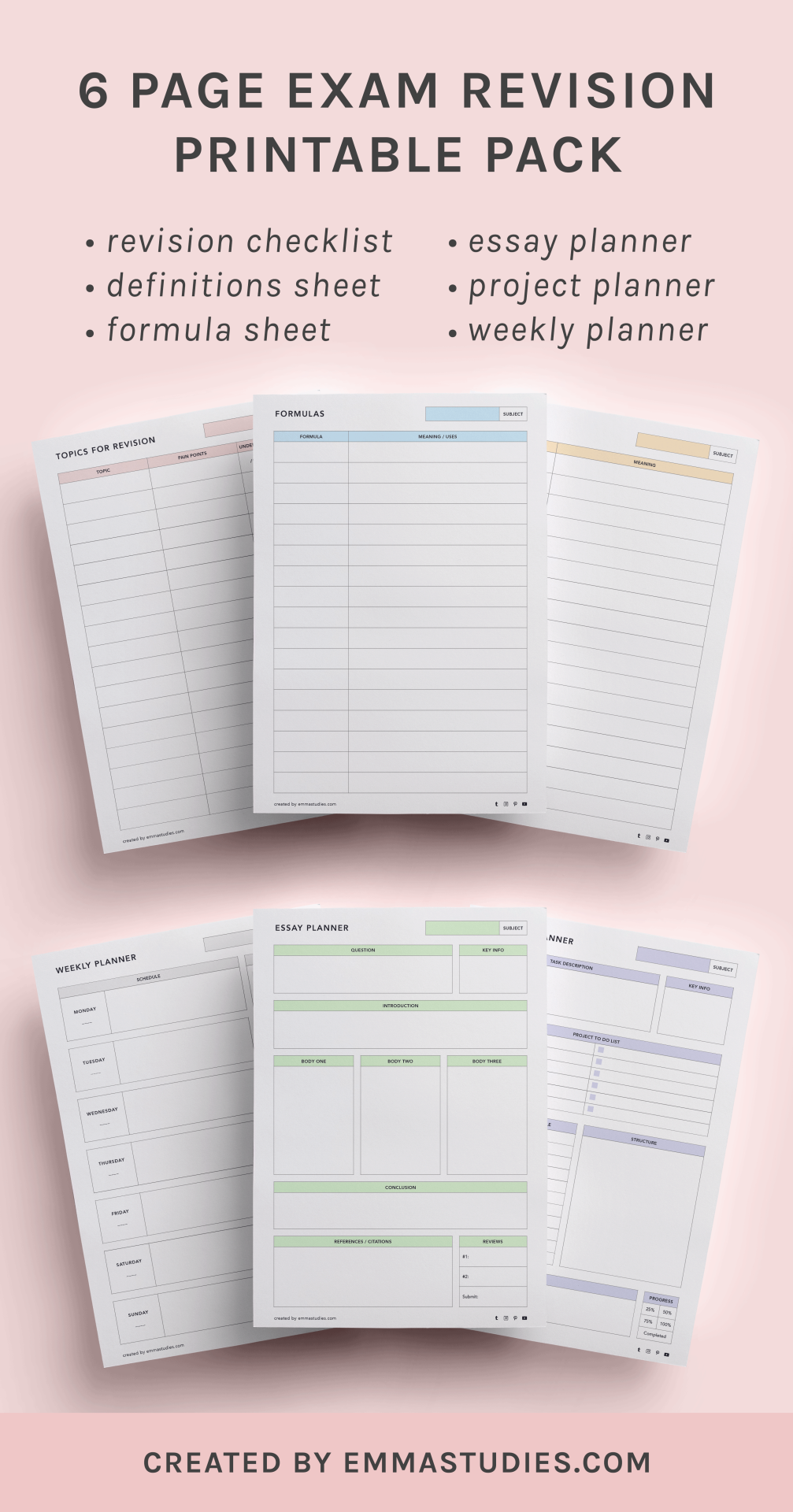
Exam revision printable pack
Exams are one of the toughest parts of life so why not make it just that tiny bit easier with some printables! I picked out some of the things that seem most necessary for studying including a definitions and formula sheet, topics for revision checklist, essay and project planner, and a weekly schedule!
All the six pages come in a single download in six colours: pink, blue, peach, grey, green and purple. You can download the file in a colour of your choice from the Google Drive link below:
Folder of printable pack download
I hope you enjoy using these and if so, I’d love to see them in action! Feel free to tag me on Tumblr with #emmastudies or on Instagram with my username @emmastudiess in any photos you upload. If there are any problems or errors, please let me know via my inbox.
Disclaimer: This printable is for personal use only. You may edit it yourself if you like, but please do not redistribute without my permission. Thank you!
9K notes
·
View notes
Photo

Interviews can be horribly intimidating, but if you prepare well enough, feel confident in yourself, and keep your cool, then you’ll do amazingly! Here are some tips on how to ace interviews in different situations, with some general tips thrown in for fun. Good luck, and hopefully something in here will help you out!
College Interviews
Tips
Know plenty about the college you’re applying to. Highlighting a particular attribute you love about the college as well as having a good general knowledge base shows the interviewer that you are sincerely interested and have done your homework.
Be able to describe why you are a good fit for the college. Interviewers want to ensure that you’re a good candidate both in paper and on person, so consider things you’ve done that show character.
Choose a favourite book and be able to talk about it. College interviewers love to ask, so think about the impression you want to give beforehand and consider it carefully.
Have a question about the college that the website doesn’t answer. It shows your preparedness, and gives you a way to continue the conversation and demonstrate your interest in the interviewer’s perspective!
Bring a copy of your academic resume. Interviewers will see you as more prepared, have a concrete reference for their write-up, and have talking points during the interview for anything interesting that’s on there.
Resources
Collegeboard Big Future
Princeton Review Tips
CBS 13 College Interview Questions
Emma Willard Advice & Sample Questions
13 Tips for Skype Interviews
College Interviews: The Basics
Scholarship Interviews
Tips
Be able to tell the interviewer why you deserve the scholarship. Don’t simply rattle off your achievements, but rather present yourself as the student most aligned with the scholarship’s mission and the most ready to succeed.
Make sure to link your accomplishments to the scholarship’s mission statement. Scholarship providers often have pillars (like philanthropy, promoting the community, etc.) which you should uphold.
Don’t be afraid to take a moment to think about oddball questions. It’s better to give a well-developed and thought out response to which vegetable you’d be than bumble through it simply because it was unexpected!
Know your application essays well. I’ve been asked to elaborate on my community service plans and why I chose to do band because of my essays, so knowing the topics well will undoubtedly help you out and show passion.
Resources
BYU Sample Scholarship Questions
EIU Sample Questions & Tips
10 Common Scholarship Interview Questions
Vanderbilt Interview Tips
5 Tips for successful scholarship interviews
Job Interviews
Tips
Make it seem like the company needs you. When asked why you want the job, address how the company will benefit from employing you, and not how you will benefit as a person.
Bring materials. Have letters of recommendation, a resume, and your portfolio (if applicable) on hand. Make sure to have multiple copies in case there are multiple interviewers.
Research the employer. Know the company history, its mission, recent events, and the values/vision it advertises. Tailor your presentation of yourself to match those ideals.
Determine your greatest strength and weakness. You will likely be asked this question, so be able to give an example, demonstrate how you have overcome your weakness, and how you have used your strength.
Resources
What to Wear to Your Interview
Interview Tips from @elkstudies
Group Interview Tips
How to be Good at Interviews by @marias-studyblr
Telephone Interview Tips
Jobs & Careers by @study-well
6K notes
·
View notes
Photo

I have one notebook for dailies/monthlies and another for collections. I like to be able to keep my collections notebook a bit messy and cross things out when I need to. It’s also good for random lists.
Per Semester
key
index
academic calendar
schedule
course info (professor, times, location, credit hours, etc.)
course requirements (pre-reqs to degree)
club info
volunteering log
goals
memories
grade tracker/paper tracker
Monthly
spending log
habit tracker (cleaning, laundry, workout, no spending, meds, etc.)
mood tracker
workout log
sleep tracker
meal tracker
grocery lists
time log (how much time you spend studying, cleaning, working out, at clubs/volunteering, etc.)
social media tracker
calendar for appointments
work schedule/hours
gratitude log
practice log (music, sports, art, etc.)
Daily
to do list
water intake (or other habits not in monthly)
weather
outfit
meals
Collections
favorite washi
pen test
inventory of items you collect (books, records, crystals, magnets, etc.)
places to go/places you have been
breakfast/lunch/dinner/snack ideas
good food places in your city
recipes
packing lists (weekend, plane, etc.)
websites you have accounts on (helpful if switching emails later on)
academic websites
level 10
DIYs
goals/achievements
quotes
wishlist
bucket list
outfit ideas
favorite shops
films, tv shows, musicals to watch/have watched
books to read/have read
favorite musicians
student discounts (places where you show your ID and get x% off)
7K notes
·
View notes
Photo

🏷 10/05/17
💡 Finally done with my notes for the whole semester of macroeconomics! Microsoft Word is super useful for digital notes I highly recommend it. Gotta start cracking on the problems now to be ready for the final, and then on to QM and sociology!
📀 MTV Presents Unplugged: Florence + The Machine
#studyblr#studyspo#motivation#study motivation#digital notes#macroeconomics#study#student#productivity#finals#studyblrs get real#digital#op#notes
13 notes
·
View notes

